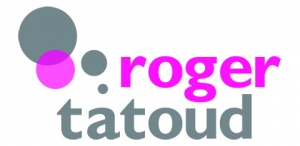 For a number of years, I’ve been participating in various adult training programmes, and a recurring observation that stands out is the challenges people face when it comes to finding and effectively utilising tools that suit their needs and can be consistently used to facilitate their daily job.
For a number of years, I’ve been participating in various adult training programmes, and a recurring observation that stands out is the challenges people face when it comes to finding and effectively utilising tools that suit their needs and can be consistently used to facilitate their daily job.
Being a bit of a geek (I had a ZX Spectrum), I have tried and abandoned many tools. The crucial point here isn’t to adopt a tool because it looks nice or trendy, but rather because it serves a purpose in your daily work.
To begin, understanding your personal workflows is paramount before trying to improve them with tools. Look at your work processes; identify and describe cases of how you manage your main activities. Then determine where a tool could prove beneficial and which tool is most suited to effectively meet your needs. In short, don’t start using a tool if you don’t know if it will fulfil a need.
Tools can significantly and positively impact your productivity, which, in turn, affects your capacity to fulfil your responsibilities while also maintaining a healthy work-life balance. It’s crucial to remember that you’re not a machine. But they can also have a negative impact on your productivity if they are not the right ones. As Sonke Ahrens aptly stated, “Even the best tool will not improve your productivity considerably if you don’t change your daily routines the tool is embedded in.” In essence, it’s all about having the appropriate tools, understanding their functions, and knowing how to effectively leverage them.
Tools come with a number of pitfall, mainly:
- Tools with a steep learning curve, demand a substantial time commitment to attain proficiency. While they might prove beneficial in the long term, the question is whether you’re willing to invest the necessary time to become a master.
- Tools that demand more time to operate than they actually save. Occasionally, pen and paper can be just as effective as a sophisticated online whiteboard, and using Post-it notes can be as swift to build a Gantt chart as using an application. In fact, I frequently rely on Post-it notes for various tasks.
- Tools that nobody else is using but you wish they would. It’s essential to recognise that trying to overcome the resistance you’ll encounter might be futile unless there’s a clear operational or executive decision in favour of using them.
- Proprietary tools should be approached with caution. Consider where your data is stored, how accessible it is, who else can access it, and what happens if you lose access.
- Tools that don’t seamlessly integrate can create barriers within your overall knowledge framework and impede your thought processes. It’s crucial for tools to be integrated into your workflow and harmonise with one another as much as possible.
Here is a list of the tools I use regularly and why.
Knowledge and information management
Obsidian – Personal Knowledge Management system, free and open source. My second brain at the heart of it all! Integrate with a number of other tools. Being self hosted, data are on my computer, synced across devices via OneDrive. Note taking, whiteboard, drawing board, all modular, community led.
Omnivore Docs – Read it later open source browser extension and app. Save webpages, organise and tag them, and read and outline relevant information, before exporting to Obsidian.
Zotero – Ugly, old school, not user-friendly bibliography manager and organiser. Does the job including taking notes on papers, organising and tagging them, and reading and outlines information, before exporting to Obsidian. Paid version (small cost) to access increased online storage.
Reference Extractor – Zotero companion: Extract references from a document with a Zotero or Mendeley bibliography.
Email Extractor – As it says on the tin. Upload a meeting agenda or document with a list of email addresses and get them out!
Knowledge creation and sharing
Miro – Whiteboard, mind mapping, brainstorming, collaboration, planning, and teaching. Easy to use.
Conceptboard – Alternative to Miro.
Mentimeter – Live survey, whiteboard. Limited free version.
Padlet – Visual board, content sharing and organisation, collaborative work, planning.
Xmind – Mind mapping, desktop version 8 (legacy), easier to use and good enough.
ChatGPT – AI. Copy editing, brainstorming, note taking – paid version. (the text above has been copy-edited by Chat GPT then by me)
Communication & Engagement
Zoom virtual meeting, paid version.
Loom screen recording, educational video.
QuillBot AI – a grammar checker online.
WeTransfer – File transfer, up to 2GB free.
LinkedIn Facebook for business people – inescapable.
Blue Sky Alternative to Twitter – New kid on the block, join my network @origena.bsky.social
Project management
ClickUp™ – Project management tool mostly used for timeline and task tracking. It has huge potential, a steep learning curve – paid version to access Gantt chart.
Microsoft 365 – Word, Excel and PowerPoint.
Outlook – Email client. Awful, but there is not much choice as it integrates with Microsoft 365.
OneDrive – Cloud storage (15TB!) for all work related activities. Integrates with Microsoft 365. For personal stuff: Box and Google Drive.
Business management
Clockify™ – Time tracking software. Paid version to access task-based costing.
Facture.Net – an invoicing system, free. Can manage multiple currencies.
Calendly – Meeting and call scheduling, paid version to access multiple event types. Integrates with Zoom and Microsoft Teams.
Other
Bitdefender – VPN
Previously used
Raindrop.io – bookmark manager, still occasionally used for sharing bookmarks.
Dropbox.com – Cloud storage, limited storage capacity, and device linking.
Evernote – Proprietary note taking app. Limited device linking. Replaced by Obsidian.
Express VPN – VPN, paid version. Replaced by Bitdefender
What I don’t use
To-do list Apps – I have never been able to manage tasks this way. It is too time-consuming and cumbersome to use. I have my own system based on the Eisenhower matrix, notebook and booking time slots in Outlook.
Questions/comments? Fire up!
~ rjt
